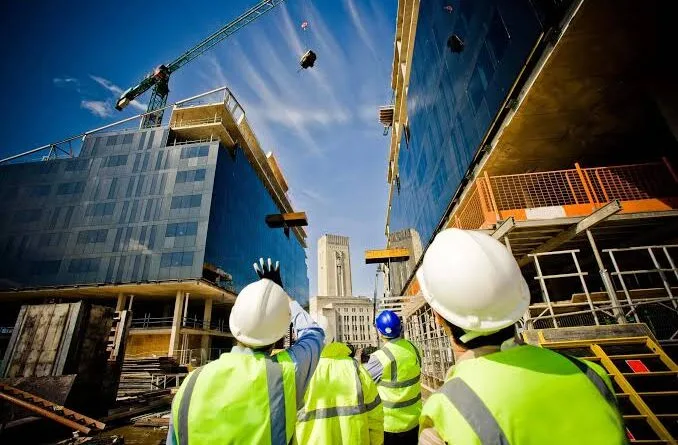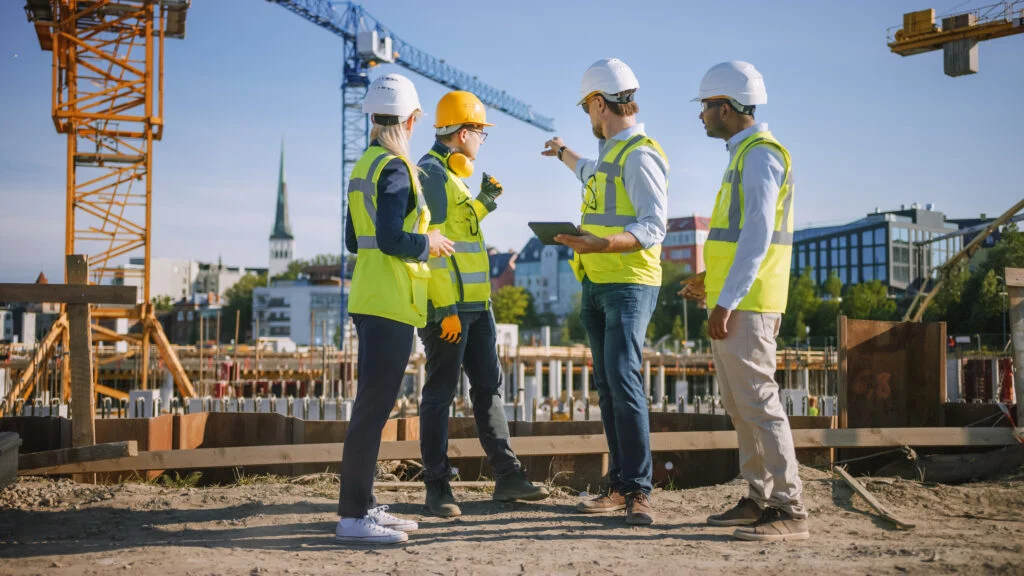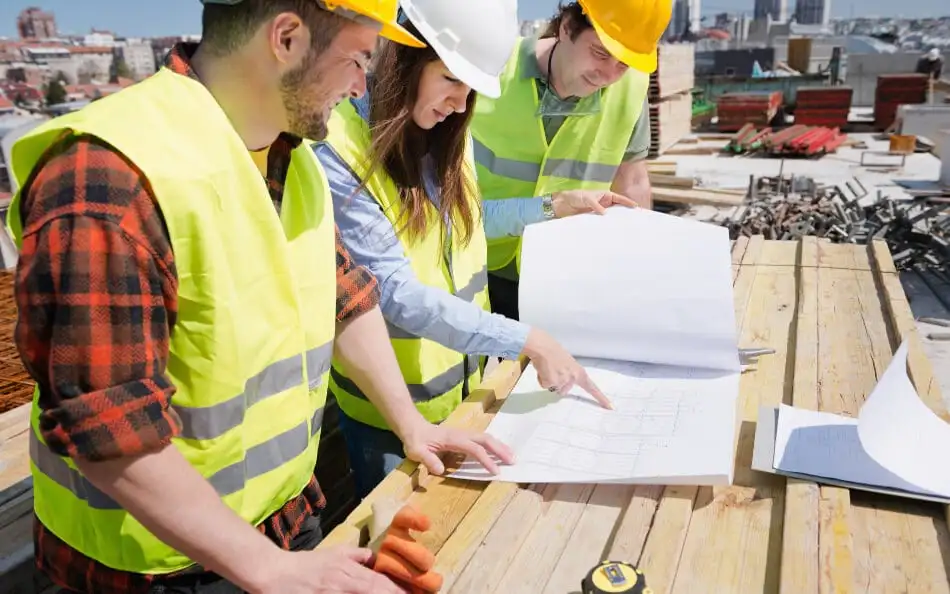Stichting Bouwresearch: A Dutch Construction Industry

Stichting Bouwresearch, also known as SBRCURnet, is a leading organization in research and development within the Dutch construction sector. It was established to tackle industry challenges and promote sustainable practices.
SBRCURnet plays a key role in advancing knowledge, innovation, and standards in building construction across the Netherlands.
This Stichting Bouwresearch Slogn is: Pioneering Innovation and Sustainability
Here, I am providing a detailed exploration of Stichting Bouwresearch’s (SBRCURnet’s) role, impact, and future directions within the dynamic landscape of the Dutch construction industry.
History and Background Of Stichting Bouwresearch
Founded in 1959 in response to the post-World War II need for coordinated building methods and research encouragement, SBRCURnet has evolved into a cornerstone of the Dutch construction landscape.

Conceived initially to bolster efficiency and sustainability within Dutch building projects, the organisation has since become a key player in the global construction research landscape.
Over the years, SBRCURnet has adapted its research agenda to reflect emerging technologies and international best practices, positioning itself as a leader in driving industry-wide innovation.
Historical Context and Foundation
- Post-WWII Era and Foundation:
- Established in 1959, SBRCURnet was initially founded as Stichting Bouwresearch (SBR) to address the urgent need for standardised building methods and promote research in the Dutch construction industry.
- The organization emerged during a critical period of rebuilding and modernisation, aiming to enhance efficiency, safety, and sustainability in construction practices.
Leadership and Evolution

- Leadership under Herman Witte:
- Led by former minister Herman Witte, SBRCURnet rose to prominence by championing innovation and fostering collaboration among industry stakeholders.
- Witte’s leadership was instrumental in shaping SBRCURnet into a respected institution known for its contributions to Dutch construction standards and practices.
- Merger with CUR Civil Engineering Center:
- SBRCURnet strengthened its position in the industry through a strategic merger with the CUR Civil Engineering Center.
- This merger expanded SBRCURnet’s expertise and resources, solidifying its role as a leading centre for innovation and knowledge dissemination in civil engineering and construction.
Growth and Impact
- From Rotterdam to Delft:
- Initially based in Rotterdam, SBRCURnet expanded its operations and influence, relocating to Delft—a move that underscored its growth and expanded capacity to serve the Dutch construction community.
- This relocation symbolised SBRCURnet’s commitment to advancing construction expertise and fostering regional development through research and education.
- Influence on Small Businesses:
- SBRCURnet has been particularly supportive of small businesses within the construction sector, providing invaluable resources, research insights, and technological innovations that enhance competitiveness and sustainability.
Continued Influence and Future Prospects

- Current Role in Dutch Construction:
- Today, SBRCURnet plays a pivotal role in shaping the future of Dutch construction expertise.
- Led by dedicated professionals like engineer Jack de Leeuw, SBRCURnet remains committed to driving innovation, sustainability, and resilience in the built environment.
- Focus Areas and Strategic Initiatives:
- SBRCURnet focuses on critical areas such as digital construction technologies, sustainable building practices, and resilience planning.
- Through strategic partnerships and collaborative projects, SBRCURnet aims to address emerging challenges and opportunities in the construction industry.
Organisational Structure
At the core of SBRCURnet’s operations is a strong governance structure, which includes a Board of Directors and executive leadership.
These leaders are responsible for supervising strategic initiatives and ensuring they are in line with the organization’s mission to promote sustainable development and innovation within the construction industry.
Know More about this On: Wikipedia
The institute functions through specialised departments and divisions, each focused on advancing specific aspects of construction research, development, and education.
Mission and Objectives

SBRCURnet is focused on promoting research-driven innovation and sustainable development in the construction industry. The organisation collaborates with industry stakeholders, academic institutions, and government bodies to facilitate knowledge exchange, drive technological advancements, and establish best practices. Its goal is to enhance the resilience and efficiency of construction projects across the Netherlands.
Activities and Services
- Research Initiatives
Central to SBRCURnet’s mission are its comprehensive research initiatives. The institute conducts extensive studies on various aspects of construction, ranging from building materials and energy efficiency to digital construction technologies and sustainable urban development.
By partnering with leading universities and research institutions, SBRCURnet leverages cutting-edge expertise to address critical industry challenges and explore new opportunities for growth and innovation.
- Publications
SBRCURnet publishes many publications, including technical reports, academic journals, and industry guidelines. These resources serve as valuable tools for industry professionals, offering insights into the latest research findings, regulatory updates, and innovative practices.
SBRCURnet empowers stakeholders to make informed decisions and implement sustainable solutions in their projects by disseminating knowledge and best practices.
- Training and Education
Recognising the importance of continuous professional development, SBRCURnet offers specialised training programs and workshops for architects, engineers, contractors, and other construction professionals.
These initiatives equip participants with the skills and knowledge to navigate evolving industry trends, adopt new technologies, and integrate sustainable practices into their daily operations. Through its educational efforts, SBRCURnet fosters a culture of lifelong learning and innovation within the construction community.
- Collaborations and Partnerships
SBRCURnet collaborates closely with government agencies, regulatory bodies, academic institutions, and industry associations to align its research efforts with national policies and global standards. These strategic partnerships facilitate knowledge sharing, enhance research capabilities, and promote the adoption of innovative technologies and sustainable building practices. By working collaboratively with stakeholders, SBRCURnet ensures that its initiatives have a meaningful impact on the broader construction ecosystem.
Impact on the Construction Industry
- Influence on Industry Practices
SBRCURnet’s research findings and publications have significantly influenced industry practices and regulatory frameworks within the Dutch construction sector.
By advocating for sustainable building codes, promoting energy-efficient technologies, and championing resilient construction methods, SBRCURnet has helped shape industry norms and standards.
Its contributions have improved the efficiency and safety of construction projects and contributed to the overall sustainability of urban development.
- Contributions to Innovation
Through its innovative research projects and initiatives, SBRCURnet has played a crucial role in advancing technological frontiers within the construction industry.
From pioneering digital construction technologies to exploring the principles of circular economy in building materials, SBRCURnet continues to drive innovation and foster a culture of sustainability.
By supporting groundbreaking research and promoting collaboration among diverse stakeholders, SBRCURnet ensures that the Dutch construction industry remains at the forefront of global innovation.
- Challenges and Future Directions
While SBRCURnet has achieved significant milestones, it faces challenges such as securing adequate funding, adapting to rapid technological changes, and navigating regulatory complexities.
The organisation is committed to overcoming these obstacles through strategic planning, innovative partnerships, and a steadfast dedication to its mission.
SBRCURnet aims to expand its impact, strengthen its global presence, and drive positive change within the construction industry by focusing on sustainability, resilience, and inclusivity.
Comparison with Similar Organizations
In a global context, SBRCURnet distinguishes itself through its regional focus on addressing specific sustainability challenges within the Dutch construction sector. Unlike many international counterparts, SBRCURnet emphasizes collaboration with local stakeholders and tailors its research initiatives to meet the unique needs of the Dutch built environment.
SBRCURnet contributes to a more sustainable and interconnected global construction industry by sharing best practices and lessons learned with global partners.
Importance of Stichting Bouwresearch – SBRCURnet

SBRCURnet’s ongoing contributions are crucial in addressing the complex challenges facing the construction industry today. SBRCURnet ensures that the Dutch construction sector remains resilient, efficient, and prepared to meet the demands of a rapidly changing world by promoting sustainable development, driving technological advancements, and cultivating a culture of collaboration.
Conclusion
In conclusion, Stichting Bouwresearch, or SBRCURnet, is a beacon of innovation and sustainability within the Dutch construction industry. Through its pioneering research, collaborative partnerships, and commitment to excellence, SBRCURnet continues to shape the future of construction practices in the Netherlands and beyond.
As the industry evolves, SBRCURnet remains dedicated to advancing knowledge, fostering innovation, and building a more sustainable future for future generations.
Also Read:
FAQ:
1. What Was The Main Goal Of Stichting Bouwresearch?
The main goal of Stichting Bouwresearch (later SBRCURnet) was to promote research and innovation in the Dutch construction industry, aiming to standardize building methods, enhance sustainability, and improve overall construction practices.
2. Who Was The First Chairman Of Stichting Bouwresearch?
The first chairman of Stichting Bouwresearch was Herman Witte, a former minister who played a pivotal role in guiding the organization during its formative years, championing innovation and industry collaboration.
3. What Led To The Formation Of CUR Civil Engineering Center?
The formation of CUR Civil Engineering Center was driven by the need to consolidate expertise in civil engineering and construction, fostering collaboration between industry stakeholders and research institutions to address emerging challenges and advance best practices.
4. Where Was Stichting Bouwresearch Initially Located?
Stichting Bouwresearch was initially located in Rotterdam, where it began its operations focused on research and development to meet the post-war reconstruction and modernization needs of the Dutch construction sector.
5. How Did SBR Impact The Dutch Construction Industry?
SBR (Stichting Bouwresearch) significantly influenced the Dutch construction industry by establishing standardized building methods, promoting research-driven innovation, and advancing sustainable building practices. It played a crucial role in shaping industry standards and improving efficiency across construction projects in the Netherlands.

I am a content writer and affiliate marketer with a passion for crafting engaging and informative content that drives traffic and sales. With years of experience in the industry, I have honed my skills in SEO, social media marketing, and email marketing to help businesses reach their target audience and achieve their goals.




